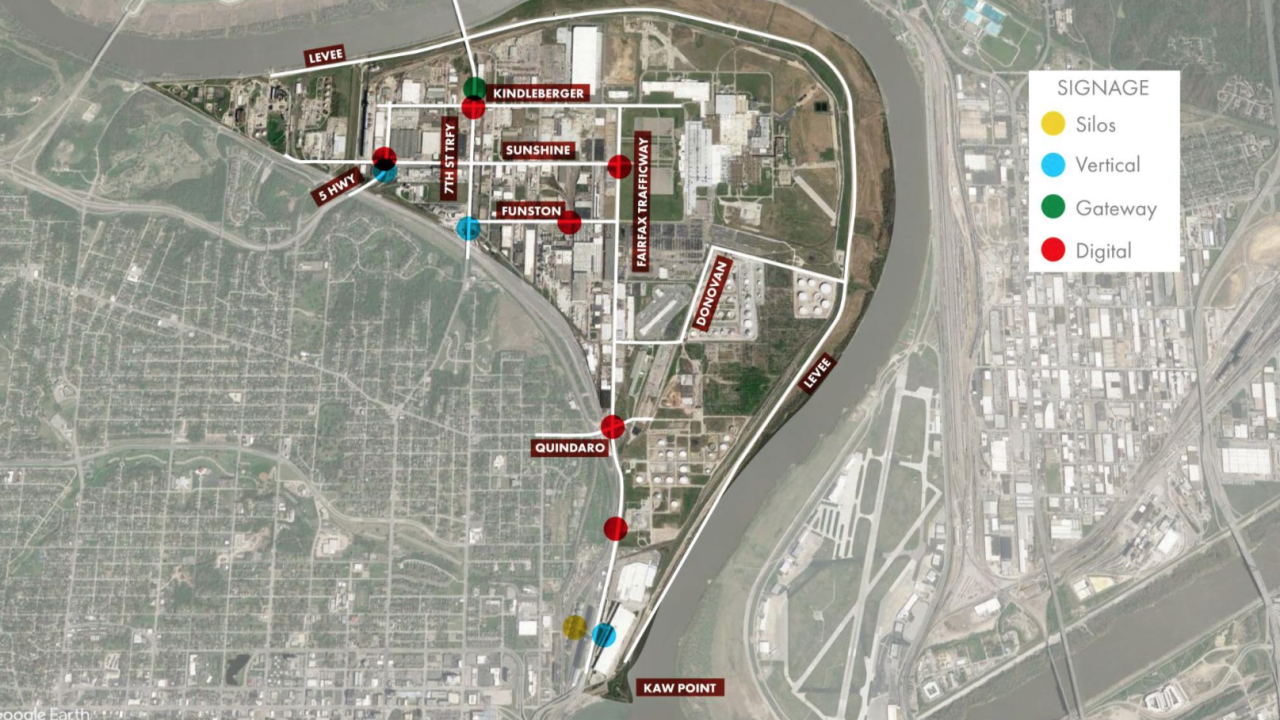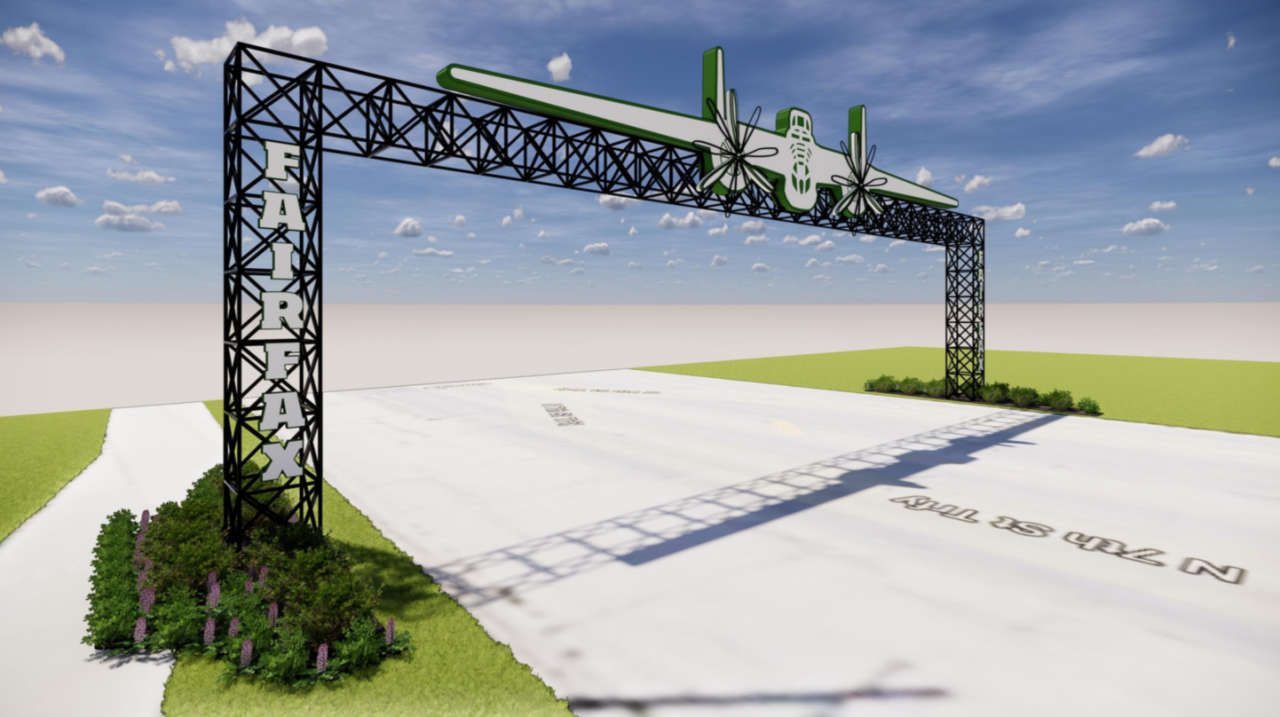KANSAS CITY, Kan. — Soon, drivers coming over the U.S. 69 bridge into the Fairfax District in Kansas City, Kansas, could see the silhouette of a B-25 bomber stretching over Seventh Street Trafficway.
Mary Lou White, one of the thousands of men and women who worked at the North American Aviation plant in the Fairfax District building B-25 planes during World War II, has seen the plans and said she can’t wait.
“I just screamed,” White said. “That is so exciting. It's such a tribute to our history.”
Melissa Clark, executive director of the Fairfax Industrial Association, said the new signs, designed by Gould Evans, will reflect the area’s history.
“We decided that the B-25 was what we wanted to represent and brand Fairfax because it’s a huge part of our history,” Clark said. “There’s no signs that say you’re in Fairfax, so this is really exciting.”
Clark said signs will be placed at the four main entrances to the Fairfax District. Digital signs also will be placed throughout the district.
The three other entrances into the district — at Interstate 70/Fairfax Trafficway, Kansas 5 and Sunshine Road, and Seventh Street Trafficway from downtown Kansas City, Kansas — will have signage that includes towers.


White's work soldering wires on the instrument panels of the planes made her a “Rosie The Riveter,” something she didn’t realize until just a few years ago.
“I wanted to help in the war effort and you couldn’t do it in the country, so I came to Kansas City and went to work at North American,” White said.
Dan Desko, founder of the B-25 History Project, said that 60,000 men and women worked at the North American Aviation plant during the war.
“It was probably one of the most important aircraft ever built, and the majority were built here in Kansas City,” Desko said.
Desko started the B-25 History Project to honor his grandparents and the thousands of others who worked at the plant. He has hopes of bringing a B-25 back to Kansas City and even one day building a museum. He sees these signs coming to the Fairfax District as an important step in the process.
“This, in a very large way, is the community standing up and going, ‘OK, we recognize that this is not just part of our history, but it’s an important piece of our history,’” he said.
Clark hopes to have the signs installed in as early as a year. The signs will be funded through a community improvement district in the Fairfax District.
Clark said she wants the signs to be up as soon as possible so that people like White can see them.
“We can’t let our history die,” White said.





